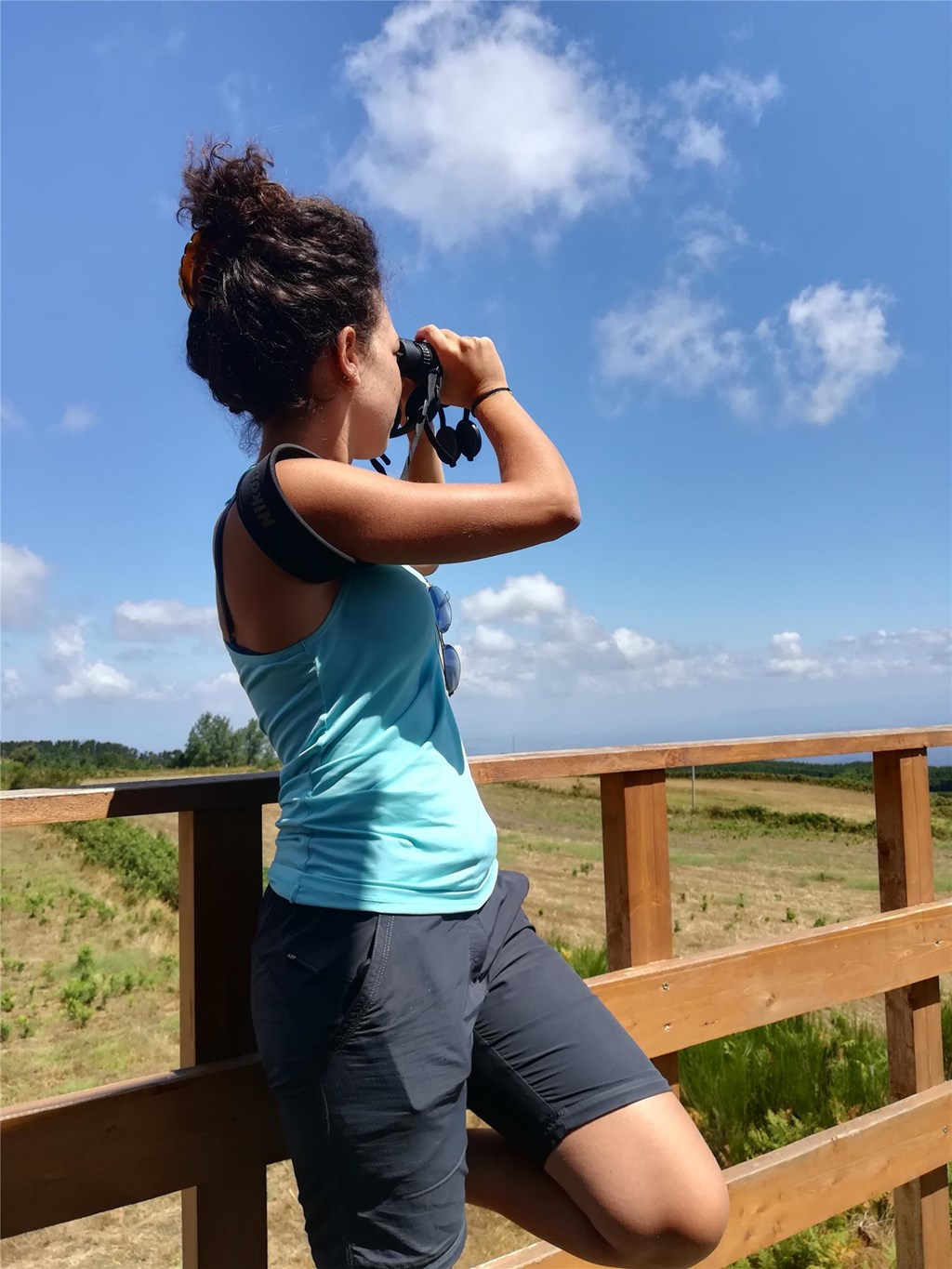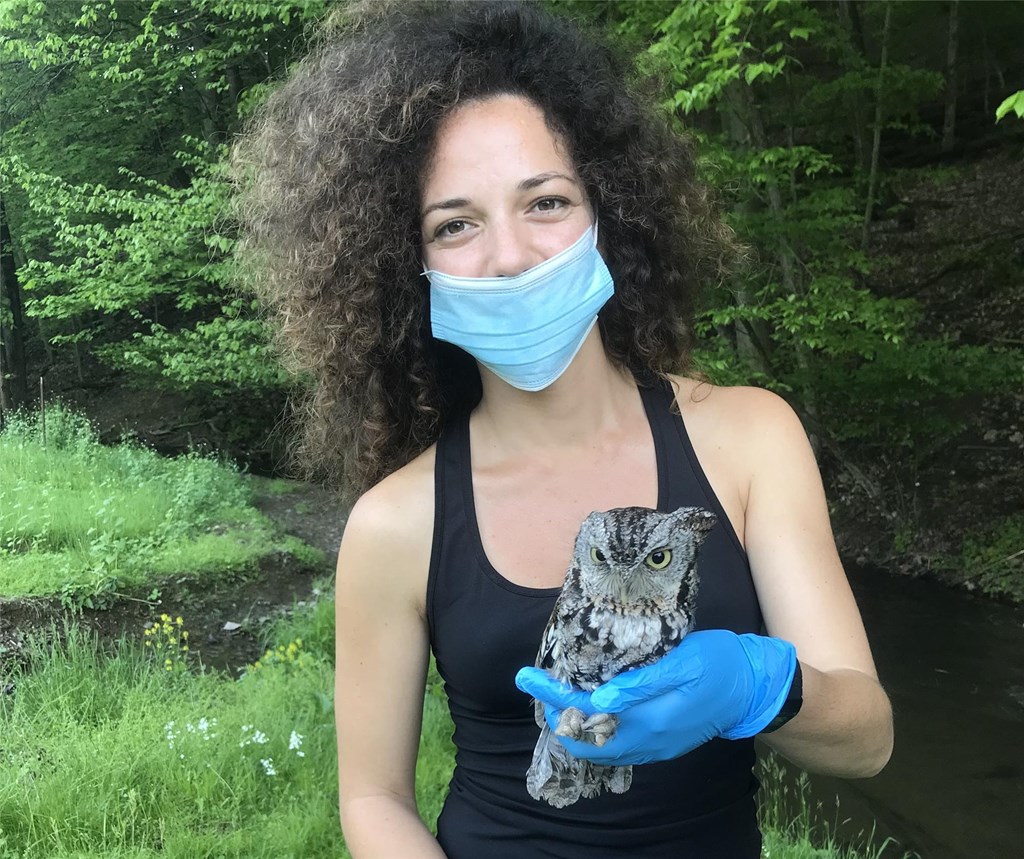Inspired by Hometown Migration
Posted on in On the Mountain by Marzia Verduci, Spring 2022 Conservation Science Trainee

My name is Marzia, and I am from a region called Calabria in Southern Italy. Since I was a child, the natural world has always fascinated me thanks to my father, who was the first to introduce me to this beautiful world. Years later, I am still impressed by its beauty every day. My love for nature has led me to pursue studies in natural science, focusing on biodiversity and natural systems. That’s how I started to learn about animals and plants with their delicate interactions. During the years spent studying many topics related to natural science, I thought that the best way to implement my studies was to actively take part in projects that involved conservation. I started to travel across my region and learned about nature and the ecosystems surrounding me. I learned that the region where I live is an important site for the migration of raptors that come from Sub-Saharan Africa traveling to breeding grounds in Northern Europe. The phenomenon of animal migration, especially in the case of birds, instantly captured me. In my opinion, migration is one of the best events that can occur in nature.
The region, Calabria, is located in Southern Italy, in front of the Strait of Messina, which separates the south of Italy from Sicily. The Strait is directly in the middle of the Mediterranean Sea. Crossing the Strait allows the migrating birds to avoid crossing a huge body of water to reach the European continent. After admiring the great show of migration for the first time, I knew that I wanted to learn more about it. So, I started to follow the migration of birds of prey across the Strait of Messina and joined groups of experts who taught me how to recognize the diversity of species of raptors one could encounter crossing the Strait. They also taught me which weather conditions or features of the territory that allow birds to migrate and to expend the least amount of energy for their long journey.
The Strait of Messina, besides allowing birds to avoid crossing huge bodies of water, ensures that the birds can take advantage of thermals. Warm currents of air move up from the two mountain chains located on both sides of the Strait, which helps the birds continue migrating while conserving energy with a reduced need for flapping. Unfortunately, the Strait of Messina is well known for the high rate of birds of prey being shot. Until 40 years ago, there was a strong tradition of hunting birds of prey. Especially honey-buzzards (Pernis apivorus), which is the most abundant species during migration. It is possible to observe them flying in large flocks during the last week of April until the second week of May. This tradition was observed in the villages and small towns right in front of the Strait of Messina. In those places, the warm air currents begin to form, and the migrating birds start to use them to go upward where they glide until they reach another thermal. After crossing the Strait, the birds start to look for the thermals, and they fly very low and close to the mountain. The points where the birds start to take advantage of the thermals are the most dangerous, since it is very easy for the hunters to shoot at them. The hunters used to hide behind constructions built just for the purpose of shooting at them.

Across the Strait is possible to admire a huge diversity of birds of prey. About 39 species have been recorded. It was necessary to act against the hunting that was occurring. In 1977, a law banning the shooting of honey-buzzards was enacted, but the hunters continued to illegally shoot at the birds during migration. In 1984, several associations started to survey the territory for poaching and many observers started to collect data about the birds of prey that migrate across the Strait of Messina. I have been participating in the surveying of the territory, helping as a volunteer for 8 years. I really enjoyed the time spent in the field, and I think that the survey of the territory against poaching is very important to protect the huge diversity of raptors crossing the Strait of Messina.
The love for raptors that I developed led me to a beautiful place called Hawk Mountain Sanctuary, in Pennsylvania, where I spent 4 months doing several activities related to the conservation of birds. I had the possibility to work with experts on several projects and the opportunity to learn migration, monitoring nests, and how to handle birds. I had the opportunity to meet people that helped me to find the beginning of my path in the scientific world. I realized that I want to pursue a career doing research related to nature conservation, gaining the right tools to be helpful, and trying to do my part in our beautiful world.